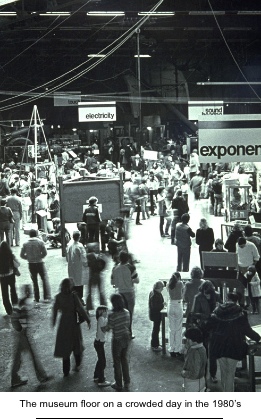 | many volunteers and provides opportunities for specific commissions. In this indirect way, therefore, museums can help reduce the shortage of well qualified teachers and the public cost of education. ART AND SCIENCE Most museums retain artists to help design didactic exhibits; we are no exception in this respect. In the Exploratorium we also display works that artists have created quite independently of our purposes. Around some of these works of art we then build related didactic exhibits. For example, we have a lovely work on loan from the artist Ben Hazzard that is entitled Pin Ball Machine. In it he makes use of the phenomenon of polarization by reflection, and we have devised a number of collateral demonstrations that bear on this phenomenon. Our many pieces by artists also include a Tactile Gallery within a 30 ft diam dome that is both a work of art and an experience in exploration. We have not yet been able to attract as many works of art as we would like. Artists must sell their works, and some of them, I fear, do not feel that our exhibit hall lives up to the stereotype of art any more than some apparatus exhibitors feel that it lives up to the stereotype of science. But nevertheless, we welcome both with open arms. All people are uncannily good at pattern recognition, at least compared with contemporary computers. However, artists and scientists, in very different ways, are especially concerned with seeking out patterns and in sensitizing others to what they perceive. Unfortunately, both their self-image and the public image are unnecessarily divisive. These images suggest that scientists are interested only in the “right answer” and that artists are not interested in any “answer” at all. In reality, both have their criteria of validity and both make intellectual and aesthetic choices that are governed by a sense of concordance with nature. Both kinds of sensitivity and both kinds of answers are complementary and are required for a full description of natural phenomena. Their separation misrepresents | ||
| a museum than in a classroom, a much wider group of people can find a way to contribute to a museum than to a school. A larger element of the population can thereby become involved in the over-all educational process. In the Exploratorium, high school and college students are employed to explain the material to the general public and to school classes. Other students are employed to build and to maintain the exhibits. People from all walks of life bring ideas and exhibits to the museum. These people range from the wandering and searching youth of today to engineers at research and industrial laboratories who are also looking for ways to broaden their contribution. The conception of exhibits, as well as their development, fabrication, exposition, and maintenance, require a wide variety of skills and knowledge which draws | |||